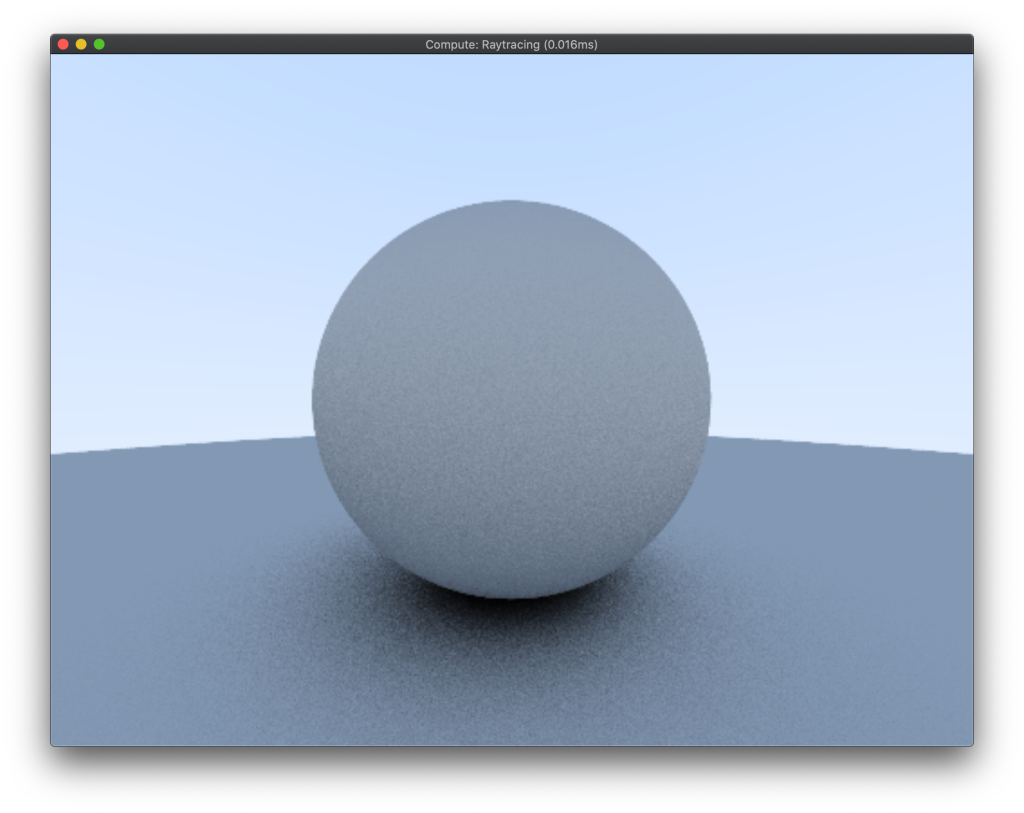Throughout this weird year I managed to accomplished a lot of different milestones when refactoring the rendering system in Crimild. Yet, the year was coming to an end and there was one feature in particular that was still missing: compute operations.
Then, this happened:
That, my friends, is the very first image created by using a compute pass in Crimild. The image is then used as a texture that is presented to the screen. Both compute and rendering passes are managed by the frame graph and executed every frame in real-time.
At the time of this writing I haven't implemented true synchronization between the graphics and compute queues, meaning that the compute shader might still be writing the image by the time it is read by the rendering engine, which produce some visual artifacts every once in a while.
Of course, I had to push forward.
A few hours passed and the next compute shader that I made was used to implement a very basic path tracer completely in the GPU:
It’s not a true real-time ray tracing solution (since I don’t have a GPU with proper RTX support), but sampling is done incrementally, allowing me to reposition the camera in real-time:
I’m still amazed about how easy it was to port my software-based path tracer to the GPU.
So much power…
So much potential…
I wanted more…
I needed more…
I became greedy.
I flew too close to the Sun.
And I got burnt.
Then I learned a valuable lesson. It turns out that if I screwed up the shader code in some specific way (which I’m still trying to understand), weird things happens. Like my compute crashing… bad (as in having to turn it off and on again bad).
Next steps
I’m planning on (finally) merging the Vulkan branch at this point, since all major features are done. Sure, there are things that still need to be fixed and cleaned up, yet they don’t really depend on Vulkan itself, like behaviors, animations and sound, which is broken (again).
Plus, I really want to release Crimild v5.0 in the next decade.
See you next year!








